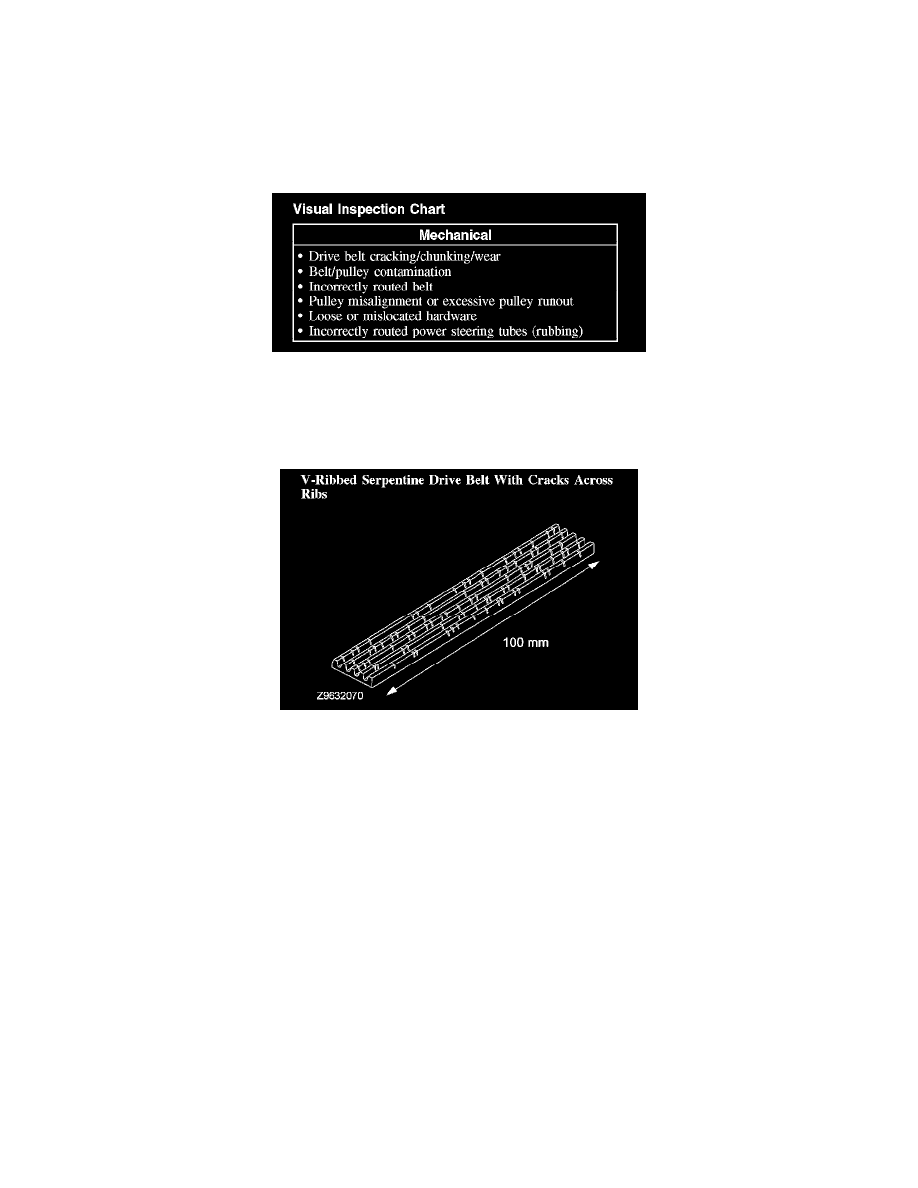F 150 2WD V8-4.6L VIN W (2007)

Drive Belt: Initial Inspection and Diagnostic Overview
Inspection and Verification
CAUTION: Under no circumstances should the accessory drive belt, tensioner or pulleys be lubricated as potential damage to the belt material and
tensioner damping mechanism will occur. Do not apply any fluids or belt dressing to the accessory drive belt or pulleys.
1. Verify the customer concern by operating the system.
2. Visually inspect for obvious signs of mechanical damage.
Visual Inspection Chart
3. Eliminate all other non-belt related noises that could cause belt misdiagnosis, such as A/C compressor engagement chirp, power steering
cavitations at low temperatures, variable camshaft timing (VCT) tick or generator whine.
4. If a concern is found, correct the condition before proceeding to the next step.
V-Ribbed Serpentine Drive Belt With Cracks Across Ribs
5. NOTE: Up to 15 cracks in a rib over a distance of 100 mm (4.0 inch) can be considered acceptable. If damage exceeds the acceptable limit or
any chunks are found to be missing from the ribs, a new belt must be installed.
Check the belt for cracks. Up to 15 cracks in a rib over a distance of 100 mm (4.0 inch) can be considered acceptable. If cracks exceed this
standard, install a new belt.
6. The condition of the V-ribbed drive belt should be compared against the illustration and appropriate action taken.
1
Small scattered deposits of rubber material. This is not a concern, therefore, installation of a new belt is not required.
2
Longer deposit areas building up to 50% of the rib height. This is not considered a concern but it can result in excessive noise. If noise is
apparent, install a new belt.
3
Heavy deposits building up along the grooves resulting in a possible noise and belt stability concern. If heavy deposits are apparent, install a
new belt.
NOTE: Piling is an excessive buildup in the V-grooves of the belt.
